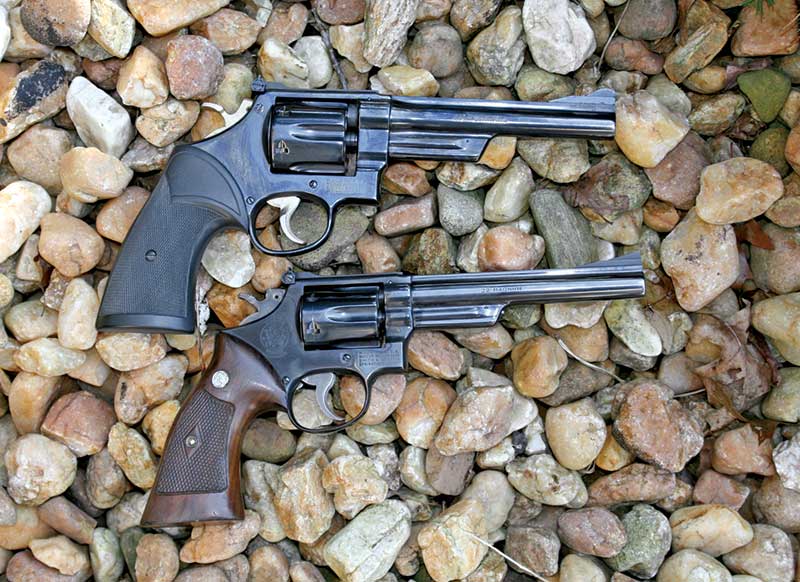Handgun Hunting Primer
By the time you read this half the country will be gripped by cold temperatures and covered with snow. Maybe it’s time to start thinking about getting into handgunning or steering that teenager toward an enjoyable lifelong interest. Make no mistake it can turn out fine or badly.
My feeling is to start out with a good double-action .22 revolver. I prefer a 6″-barreled S&W, as they have adjustable sight models with an easy to use sight radius, good balance and normally have at least an acceptable trigger pull. The beginner should not have a really good trigger, but one that is acceptable and safe. I exclude the single actions as they are time consuming and boring to load for beginners, and auto pistols aren’t as safe in the hands of a beginner. They also encourage simply blasting, not learning.
Next comes familiarizing with the functions of loading, sight picture and dry firing to become acquainted with sight picture, trigger squeeze and the sight wobble when the inevitable “trigger jerk” occurs.
The first real shots should be with ear and eye protection and large targets almost impossible to miss at short range. Standard velocity ammunition is generally more accurate than high velocity and lower in cost. Quit while it’s still fun too, when you see them tire or lose interest.
Shooting from a bench and using sandbags for a rest is a good way to begin learning the fundamentals using small bull’s-eye targets at short range. Getting consistent groups should be the goal. Concentrate on that trigger pull — the most important facet of accurate shooting. Adjust the sights until the bullets are hitting where they are supposed to, and then try some short-range shots at tin cans or other fun targets like charcoal briquettes, but without using the rest. Now repeat it about 10,000 times using paper targets to tell you what you are really doing, and fun targets to keep the fun in it.
Fast And Fancy
Ten thousand sounds like a lot, doesn’t it? It really isn’t. Many years ago, after reading Fast and Fancy Revolver Shooting by Ed McGivern, I bought a S&W .22 4″ Combat Masterpiece and put 30,000 rounds through it, shooting fast double action on moving and stationary targets — all in about three months.
No, I never got anywhere near as good as Ed, but could hit a thrown tin can consistently four times and often five before it hit the ground. I never did get those elusive six hits before it hit the ground though. Empty shotgun shells became pretty easy targets and a properly thrown coin simply disappeared when hit. In less than six months the Combat was about done for. I never learned to shoot an autoloader as accurately and fast on thrown targets.
I found .38 Special wadcutters fired in a 6″ S&W Highway Patrolman were just as accurate on thrown targets, visually more satisfying, but a bit slower between shots. My best ever was when I jumped a flock of Mallards off a farm pond at about 10 yards and got four out of six with the .38s. I still have that Highway Patrolman and it has been rebuilt at least three times, and the barrel set back as the forcing cone was badly worn. Stepping up in caliber in a similar gun is an easy step.
Moving Up
Graduating from targets to cottontails, jacks, squirrels or the like is well within the capabilities of a .22, and a great way to learn to hunt. After the .22, a .38 or .357 revolver is probably the most effective way to continue. A single action should be considered, and good quality .38 wadcutter ammo can still be purchased economically. The difference in shooting .38 Special and .357 Magnum ammunition is major. Muzzleblast in a .357 is far worse than its recoil. I’ll never forget my first shot in a short-barreled Ruger with full-power loads — and no ear protection. If shooting .38s in a .357, be sure to clean the chamber frequently, as a build up of deposits will occur at the end of the .38 case, hindering chambering in longer .357 cases.






